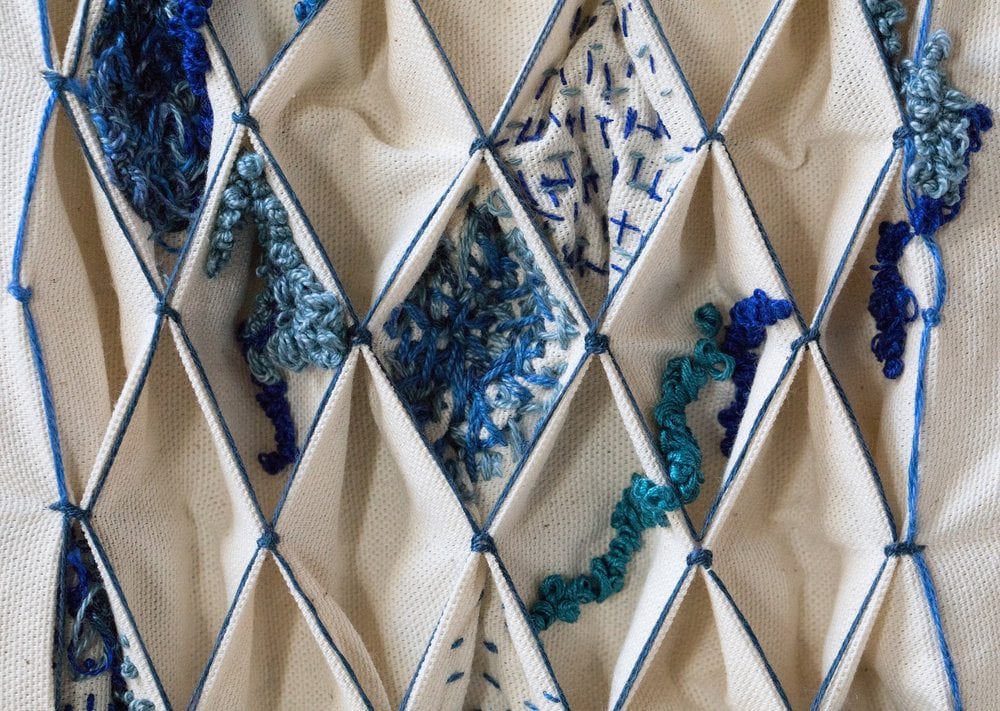
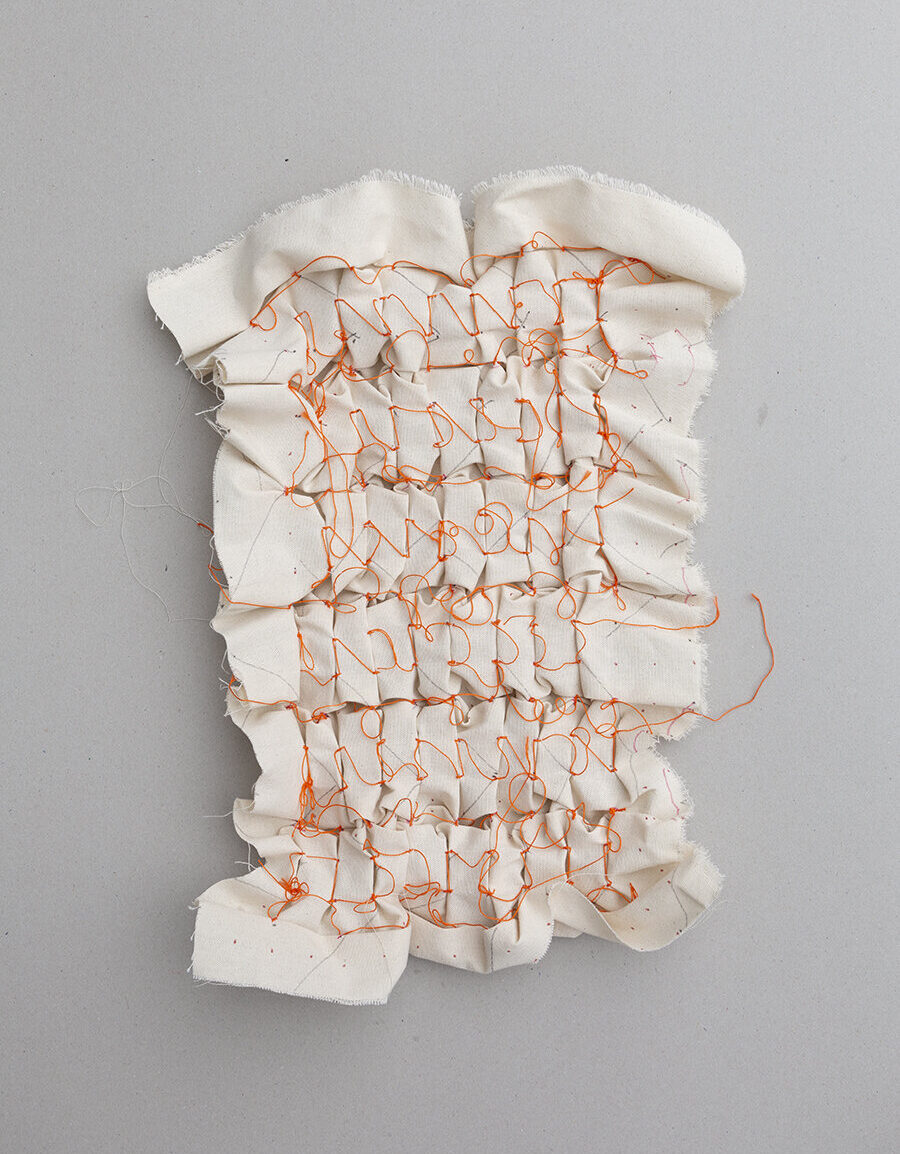
This March, Annie Coggan will be returning to Tatter to teach Modernist Smocking. As a fabric manipulation technique, smocking has traditionally been used to hold together tiny pleats which add texture, stretch, and cushioning to a garment. Called “modernist smocking,” Annie’s technique is much more sculptural and architectural than traditional smocking. By creating a large grid upon which to manipulate the fabric, she is able to create new spaces within the pleats of the cloth to experiment with color and texture. We spoke with Annie about her practice and how she translates intuitive understanding of dimensional space into a teachable practice.
When did you start sewing?
I had a 1970s feminist mom who would not teach me how to sew, so sewing became my rebellion at eleven or twelve. I remember very vividly going to Woolworths and seeing embroidery thread, all those colors, and just wanting to do something with the colors. So I’ve kind of traced it to rebelling against my mother and teaching myself how to make rag dolls and embroider. I made tie skirts and my dad had been in the Navy and I reworked all his trousers so I could wear them.
Later, I was a dancer and part of the dance preparation ritual was reworking your leotards to create different lines and I taught myself to knit to make leg warmers. So it was this act of self reliance. I needed these things, and when you dance you sew your pointe shoes. Dental floss is really great for sewing your pointe shoes so with that kind of specificity in the needle you need, the type of thread, really shaped how I made things.
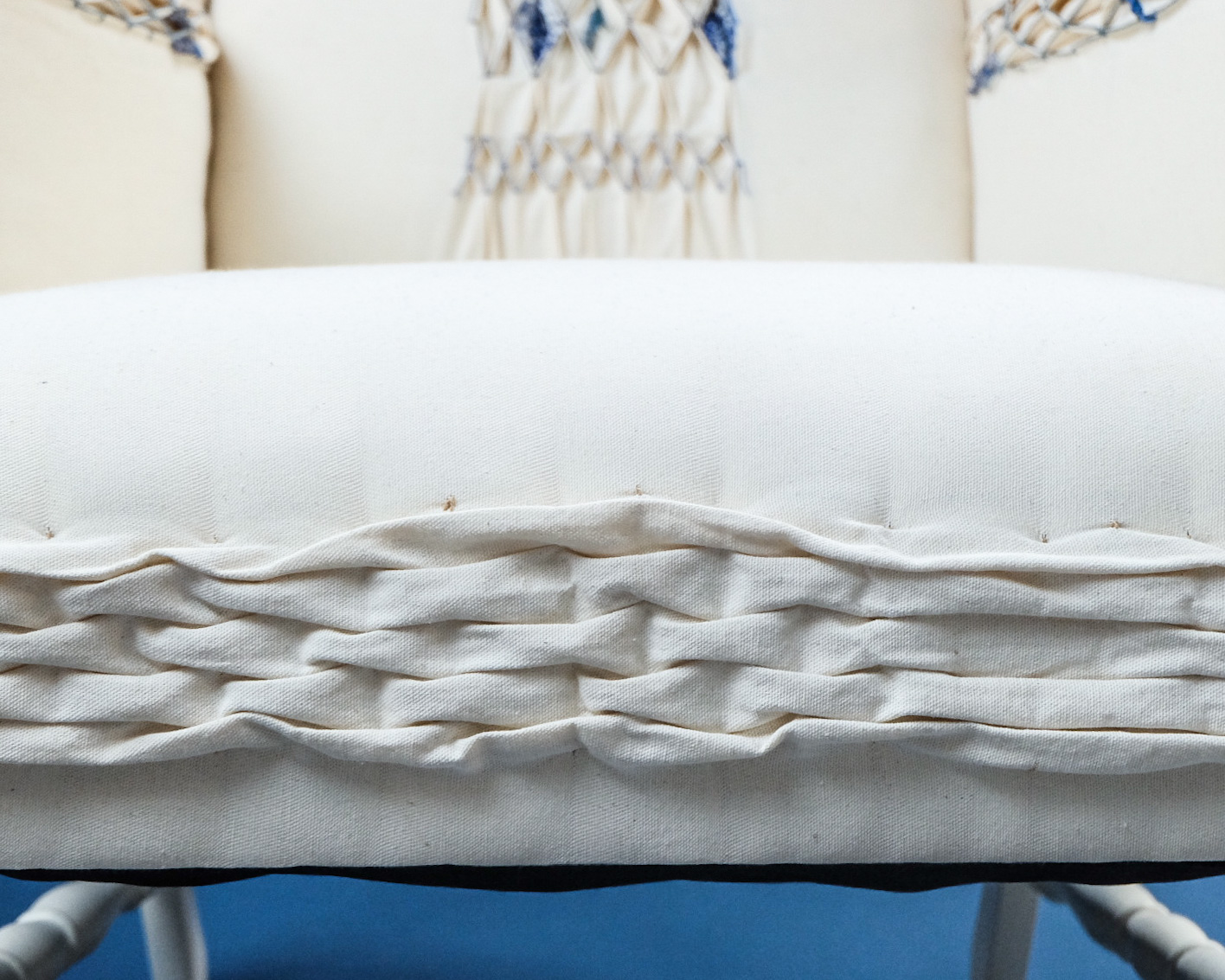
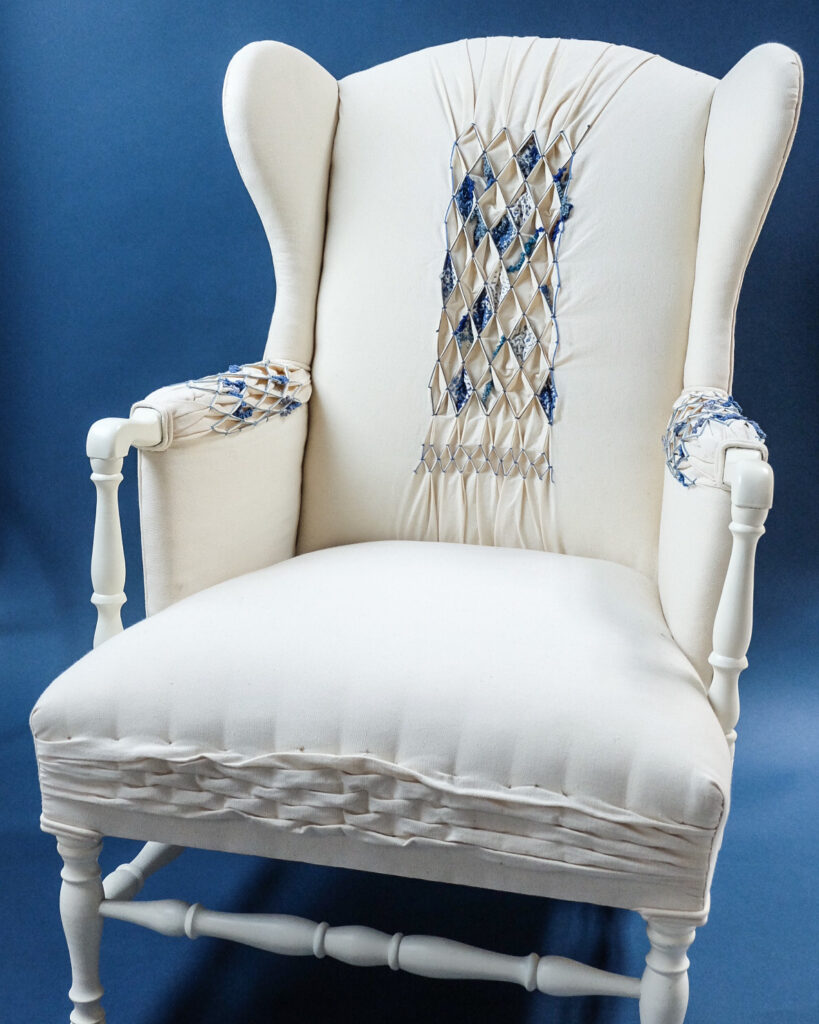
How did you get back into sewing?
When I went to architecture school, I realized the only thing I really liked was making models. I wasn’t as interested in the actual buildings. I had a life crisis at forty and had to ask myself what I like, and I don’t like spreadsheets. So about fifteen years ago, I really started making again and made it into a practice.
Do you think that the geometry of making tiny architectural models goes into your fascination with smocking?
Yes. In many ways, the smocking was a response to my dissatisfaction with the two dimensional. I’ve done a lot of thinking about the spaces that we made in smocking, just sort of exploring the three dimensional quality. Smocking became super easy for me and I have to work to actually teach it to someone else because I just understand it intuitively.
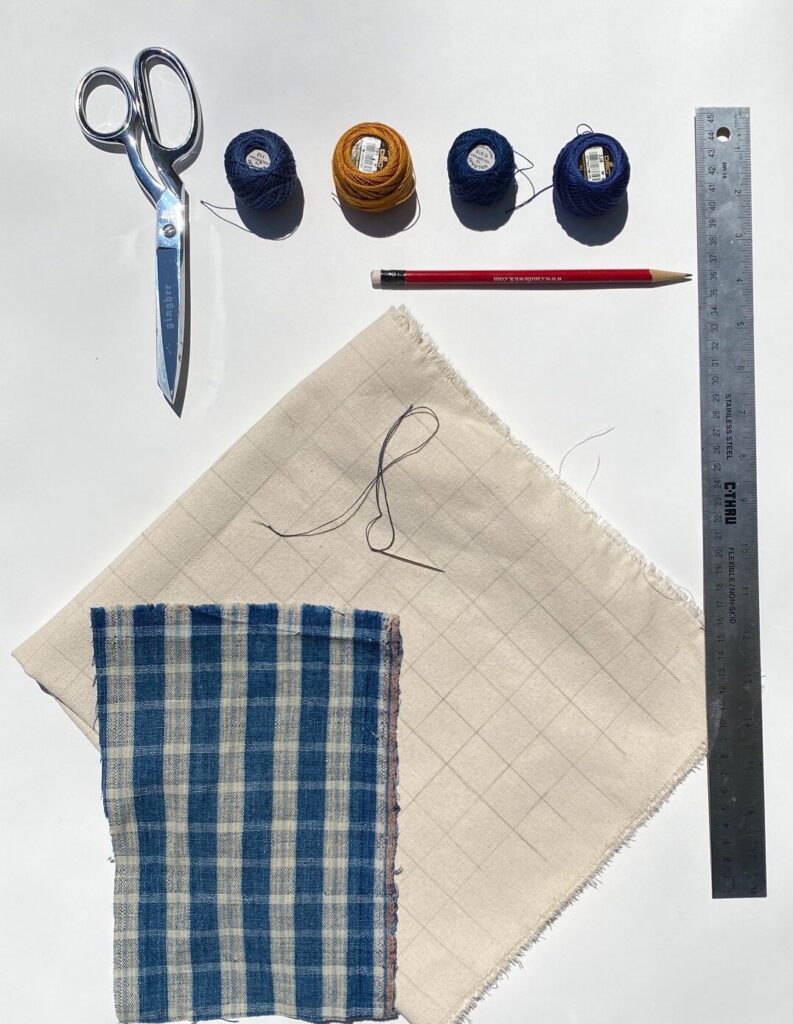
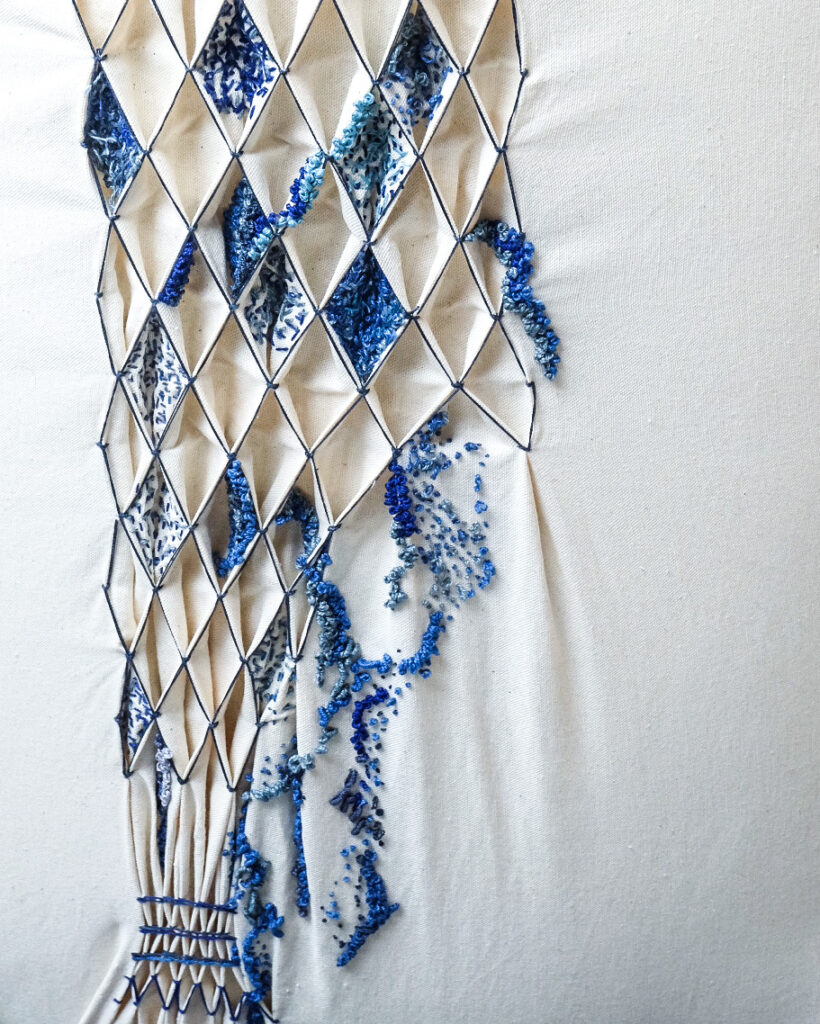
It’s funny, my mom is an architect and what you’re saying reminds me of the way that she thinks in dimensional space. It is just totally different and it’s apparently very common for architects to have dyslexia.
Oh, yeah. My daughter had learning issues, and when the school quizzed us I had a lot of the same issues with flipping the letters. She goes, “Oh, are you an architect?” I think one of the reasons I’ve been teaching smocking is because I had to figure out a way to kind of mechanically develop it rather than learn it by talking about it as a developed surface. It’s much more interesting to me to figure out a system. You take the grid, and you hold the corners of the grid to get the logic of smocking. That’s why I call it kind of “modernist smocking,” because it’s based on a grid based system. My undergrad degree was in art and I did printmaking and drawing and the like. It sparked a dissatisfaction with this sort of flat space.
I think there’s a significant number of people for whom art is best in two dimensions and for others it is really only compelling to work in three. How did you change back to textiles?
It takes a lot of courage just to say out loud that I’m not interested in capital A ‘Architecture’ when you’re successful and everyone views you as an architect. But it’s a weird industry. Your first act is calling the dumpster to clear things away. I had to find smaller acts, to be more careful on this earth. So that was definitely significant.
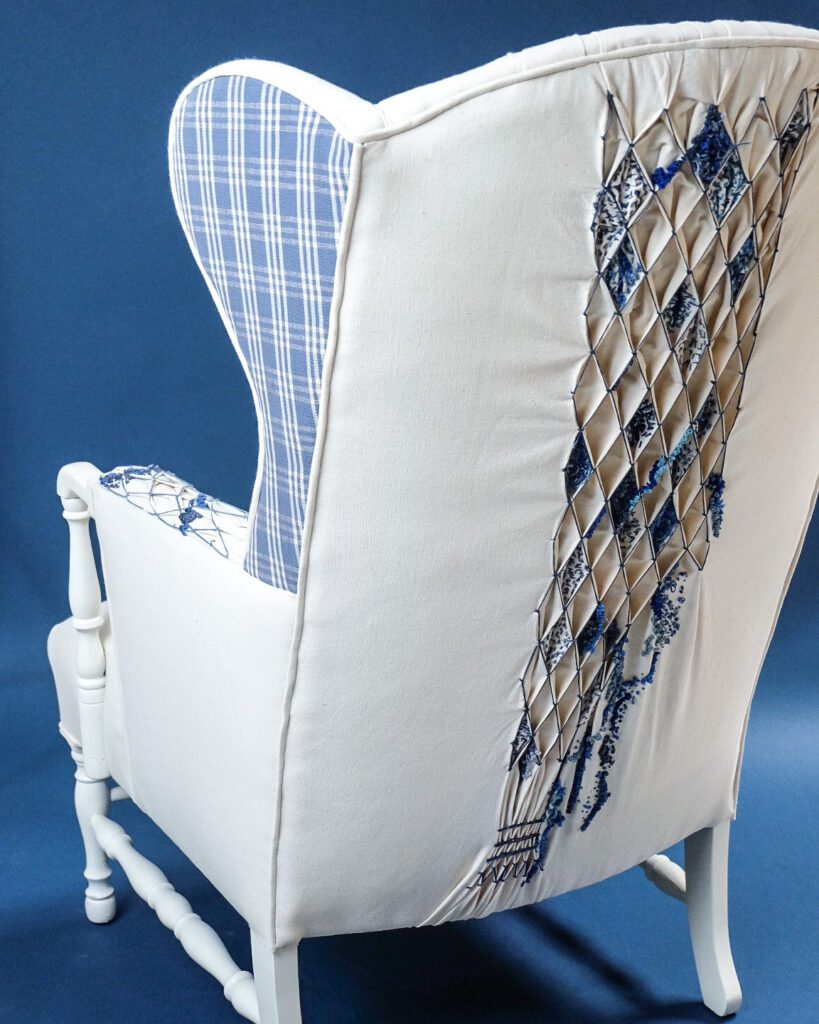
Does the environment come into your practice a lot?
You know, it’s interesting because if you have a value system like that, it impacts every part of your life. I have to cut in a grid these very specific lengths of fabric for this workshop. So after two or three years I had all these off-cuts so I started trying to primarily make from that stack. I’m always trying to work with what’s in arm’s reach. I always make sure things are local, I’m very careful about manufacturers. I just try to be a good citizen. So it’s not at the forefront, it’s just like a value system that makes up the basis of what I do.
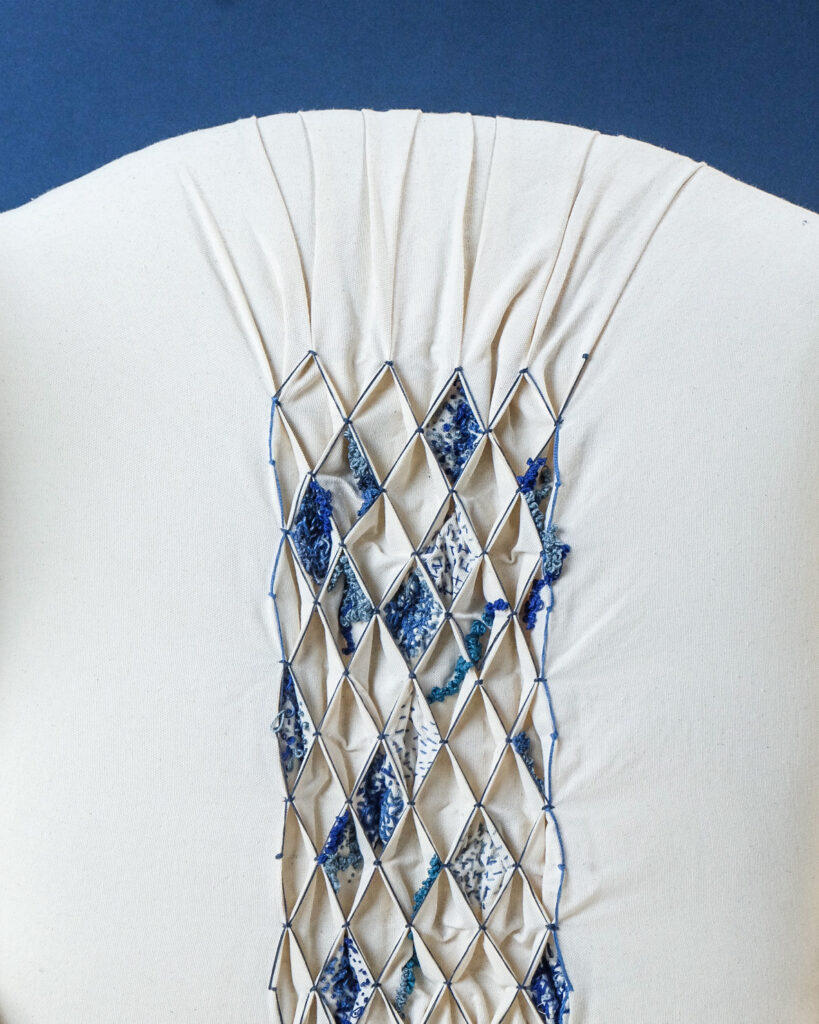
Is there anything you are especially looking forward to about the class?
The thing that has been really interesting is that Tatter has allowed me to just teach the technique. I know that you also have workshops that culminate in a product, but something I really appreciate is the ability to teach the technique just for the sake of exploring the technique. I just teach the logic of smocking. I get to talk about modernist values and I don’t have to do smocking in this very rigid way. A community, a class where you can just have a conversation about a technique, is really exciting. I get to see what people do with their smocking. They put plants in their smocking, they bust open the stereotype. That’s something that I really, really value about getting to teach this class. The students get to take a technique and put it into their own practice. I don’t want people to do what I do. I want people to get an idea from the technique and take it somewhere new.
You can read more about Annie’s practice and creative work in the Tatter Journal Issue 1: Isolation.
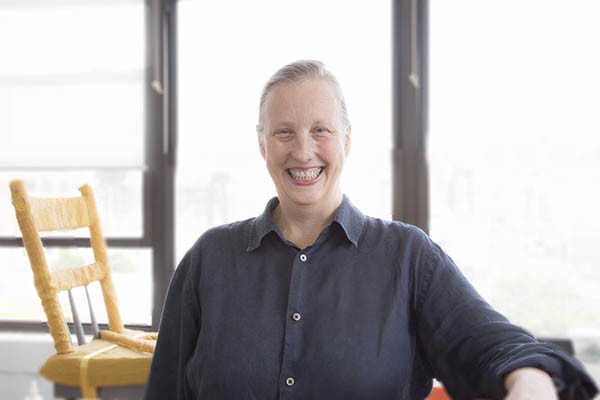
Annie Coggan is a designer, artist, educator and a principal at Coggan + Crawford Architecture and Design based in Brooklyn, NY. A native of Atlanta, Georgia, Coggan received her Bachelor of Fine Arts from Bennington College in Vermont and her Master of Architecture from the Southern California Institute of Architecture (SCI-Arc), Los Angeles CA. Her work has been exhibited at A D/B Project Space (Brooklyn), Gestarc Gallery (Brooklyn), Barbara Toll Fine Arts (Manhattan), the Textile Arts Center (Brooklyn), Mississippi CAAD Visual Arts Center, and more. She has curated exhibitions at TODA (New York) and Irondale Center for the Arts (Brooklyn), amongst others. She currently is on the faculty at Pratt Institute and The School of Visual Arts in New York City. She has been featured in Furniture A+D, Journal of Architectural Education, design*sponge and Remodelista. In 2010, she was an artist in residence at the Textile Arts Center in Brooklyn. She is a contributing editor for the literary magazine A Public Space, the book reviewer for the Center for Architecture’s Book Talkseries.
